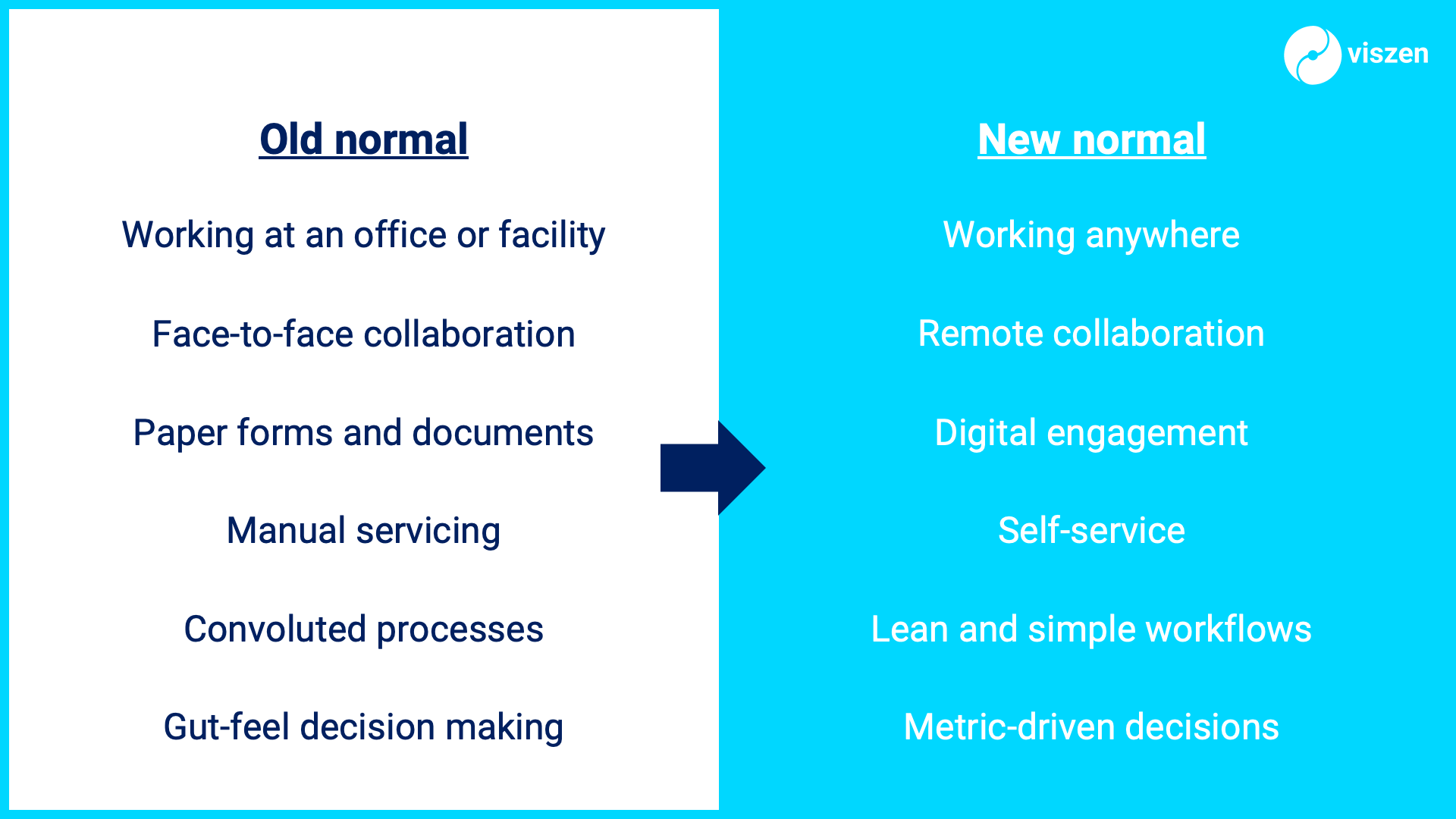Preparing your business for the new normal
2020 started with a shocking chain of events that gradually changed the lives of everyone around the globe. To flatten the curve of COVID-19 virus infections, countries imposed lockdown measures which have heavily impacted consumers, employees, companies, and economies at large. With the virus still a threat, and the world becoming more conscious about health and safety going forward, we must transform towards the “new normal”, but what exactly does this mean? For many businesses and people, this involves:
- Working anywhere over working at an office or facility. People work anywhere, have more autonomy, and flexible styles of working. Work is underpinned by software and centred around digital devices like laptops, mobile phones, and tablet devices.
- Remote collaboration over face-to-face collaboration. People are distributed, and most face-to-face interactions must be adjusted to be productive in a remote way through text conversations, phone calls, and video calls.
- Digital engagement over paper forms, and documents. Comprehensive physical paper forms and documents are obsolete. These forms and documents are available through user-friendly digital channels and information is integrated.
- Customer self-service over manual servicing. Visits to storefronts, office branches, and other facilities are limited and customers are able to transact with a business through digital self-service mechanisms.
- Lean and simple workflows over convoluted processes. Complex activities involving multiple handoffs, approvals, and interactions are simplified and streamlined for efficiency towards distributed ways of working and self-service.
- Metric-driven measurement and decisions over gut-feel. Decisions are made using data about people, and product and service usage. This requires prompt digitisation of processes and consolidation of data and information.

Traditionally, businesses relied on a number of different activities to keep the wheels turning. This includes activities like, placing orders, accepting receipt of goods, on-boarding customers, and fulfilling purchases, among many others. The use of paper was widely used to accomplish many of these activities. Furthermore, these activities are generally disparate, relying on people interacting with each other to capture and share information - this has long-been cumbersome and fragile posing a risk to businesses. The COVID-19 situation merely highlighted these risks and forced a new way of operating.
With the world moving towards the “new normal”, paper-based processes are infeasible and businesses of all shapes and sizes need to find a more effective way of working. Some of the specific areas of attention include:
- Making paper processes digital to keep business functions moving. Application forms, onboarding information capture, transactional documents, invoices, compliance documents, and more, are slow and nuanced paper-based processes. Digitizing them allows businesses to operate seamlessly without physical interactions.
- Making information available to the people that need it. Information stuck in paper documents, scanned images of documents, and PDF forms create silos where it is difficult to share and surface insights to the right people at the right time. Integrating and digitizing these formats is key to make data-driven decisions and attain productivity in the new way of working.
- Using low-code tools to save costs and incrementally improve. Overhauling an entire business to become digital overnight is an impossible feat. A business doesn’t need one system to support everything, but small purpose-built software systems and tools can be leveraged to solve critical problems that really make a difference. Tools that usher gradual transition must be favoured over big-bang changes that may pose risks to the business.

The first step towards digitising your business is understanding the processes within it. One easy and hugely useful way to do this is mapping. We would like to help you with a commitment free mapping workshop to figure out what cogs in your business keeps the machine ticking, and what areas pose risks and opportunities.